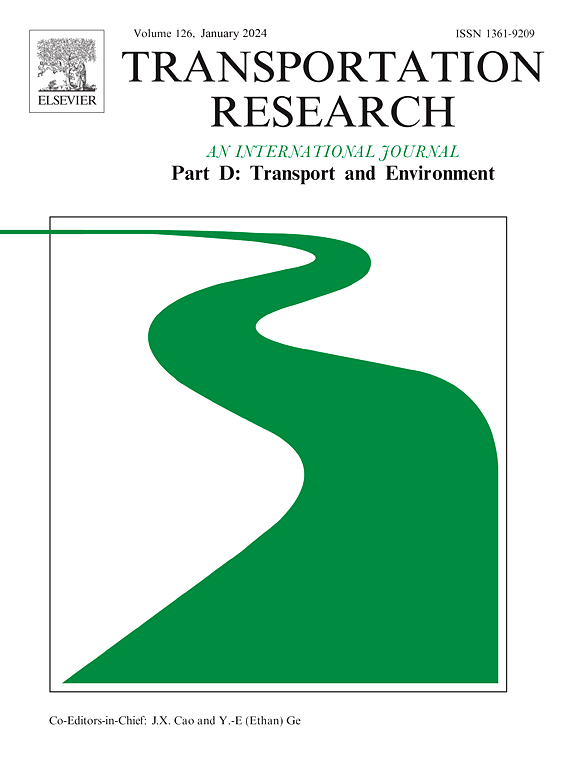Where do built environment attributes most effectively influence bike sharing usage?
IF 7.3
1区 工程技术
Q1 ENVIRONMENTAL STUDIES
Transportation Research Part D-transport and Environment
Pub Date : 2025-04-04
DOI:10.1016/j.trd.2025.104717
引用次数: 0
Abstract
Built environment policies have proven to be an impactful strategy to promote bike sharing usage. However, most studies on spatial impact of built environment attributes failed to consider nonlinear relationships in their local models. Furthermore, most studies ignored holidays during weekdays in their models. With the data from New York, we explore the spatially nonstationary built environment effects on bike sharing usage on workdays and non-workdays considering nonlinear relationships with the geographically weighted gradient boosting decision tree approach. We found that the contributions of built environment attributes are spatially heterogeneous across the study area and differ between workdays and non-workdays. For example, proportion of park land use has a pronounced influence on central Manhattan and southern Brooklyn on non-workdays but exerts no notable impact on workdays. These findings provide targeted implications for designing location-specific built environment and transportation policies to encourage bike sharing usage.
求助全文
约1分钟内获得全文
求助全文
来源期刊
CiteScore
14.40
自引率
9.20%
发文量
314
审稿时长
39 days
期刊介绍:
Transportation Research Part D: Transport and Environment focuses on original research exploring the environmental impacts of transportation, policy responses to these impacts, and their implications for transportation system design, planning, and management. The journal comprehensively covers the interaction between transportation and the environment, ranging from local effects on specific geographical areas to global implications such as natural resource depletion and atmospheric pollution.
We welcome research papers across all transportation modes, including maritime, air, and land transportation, assessing their environmental impacts broadly. Papers addressing both mobile aspects and transportation infrastructure are considered. The journal prioritizes empirical findings and policy responses of regulatory, planning, technical, or fiscal nature. Articles are policy-driven, accessible, and applicable to readers from diverse disciplines, emphasizing relevance and practicality. We encourage interdisciplinary submissions and welcome contributions from economically developing and advanced countries alike, reflecting our international orientation.

 求助内容:
求助内容: 应助结果提醒方式:
应助结果提醒方式:


